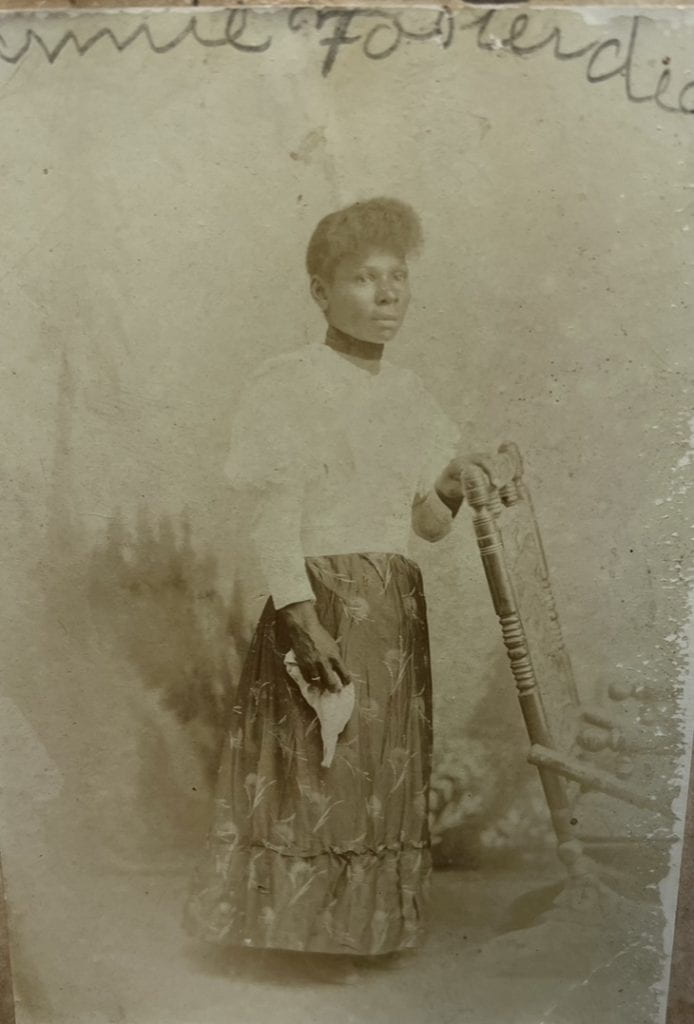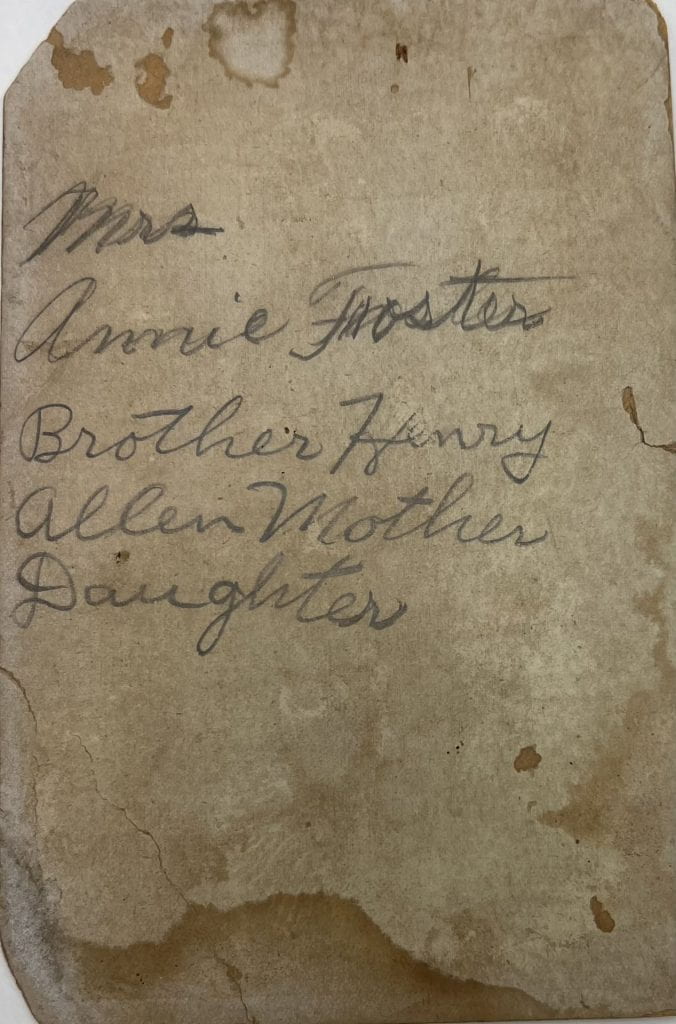
The photograph you see above is a portrait of a woman standing, possibly of Annie Foster. The photograph was created between the years of 1880-1910. The photographic form is an albumen print on a cabinet card. Inscribed at the top of the photograph reads, “Annie Foster dead.” The back of the photo is inscribed with, ““Annie Foster/ Brother Henry Allen/ Mother/ Daughter.” This is one of the three photographs I have spent the majority of the semester researching endlessly in a Museum Studies/Africana Studies seminar at the University of Delaware. The possible dates in which the photograph was created places it within the Late Victorian era. The Late Victorian Era was the later half of the 19th century and the early 20th century, the era named after Britain’s Queen Victoria.
The woman presumed to be Annie Foster, stands for a portrait wearing a patterned, long tiered floral skirt and a white gigot sleeve blouse. A strip of dark cloth covers her neck. The gigot sleeve, also known as the leg-of-mutton sleeve, was named after its resemblance to a sheep’s hind leg. The gigot sleeve was a dominant fashion trend in the 1830’s, it later returned in the 1890’s. The hourglass figure became fashionable in the 1890’s, in which the gigot sleeve aided in that hourglass effect. Women were expected to be wide at the shoulders and bust, narrow at the waist, and wide at the hips. The movement of a woman’s skirt was also a focus of 1890’s fashion. Women’s skirts were allowing more mobility than ever before. “Annie Foster’s” skirt is loose and wide at her feet and tapers up to become tight at her waist, maintaining that hourglass shape.[1]
Fashion of the late 19th and early 20th century allowed for more self-expression, especially for women. Women’s fashion at the time was honed in on movement and expression, since the roles of gender were becoming more flexible. Women were becoming more active in working and sports, and their clothing reflected that. This portrait of possibly Annie Foster is a prime example of the the fashion trends in the Victorian era. “Annie Foster” displays her femininity through her clothing, while also depicting the changes in gender roles at that time in history.

Endnotes:
- https://www.familysearch.org/en/blog/1890s-fashion-changes
- Figure 1, Portrait woman standing, possibly of Annie Foster, circa 1880-1910. From Black Portrait Photograph Collection.
- Figure 2, The back of Portrait woman standing, possibly of Annie Foster, circa 1880-1910. From Black Portrait Photograph Collection.

